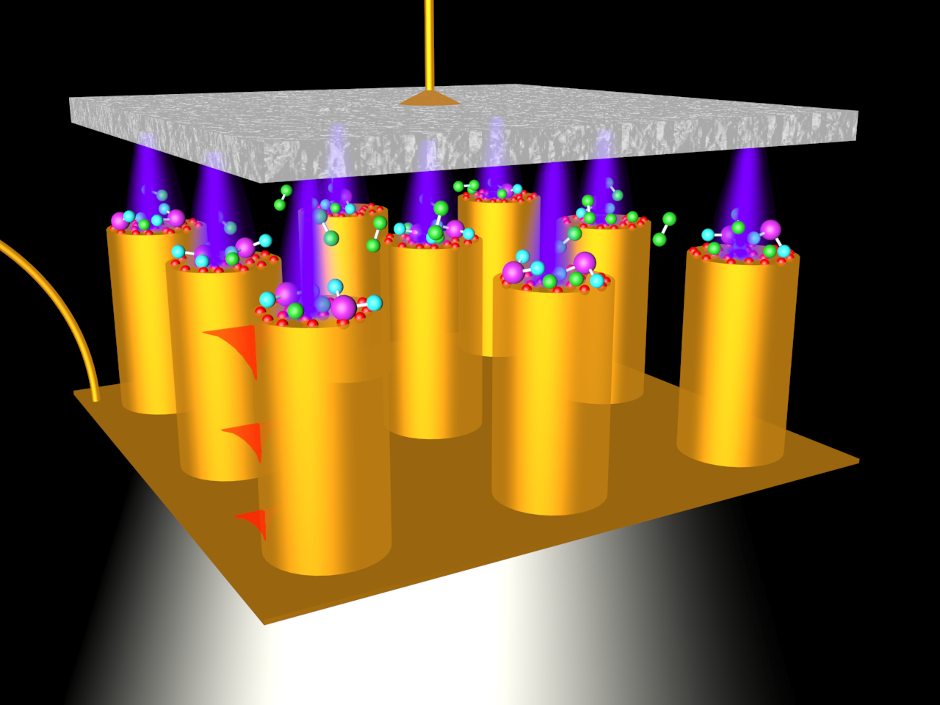Nanoscale device could create new chemicals and speed up electronics
A nanoscale device developed in the UK could be used to help synthesise new chemicals and improve the speed of electronics equipment.

The device, developed by researchers at King’s College London and published in Nature Nanotechnology, uses quantum effects to convert electrons flowing around a circuit into a controlled stream of “hot electrons” and light.
Hot electrons are highly energetic, making them very useful in chemical research, according to Dr Pan Wang, the paper’s lead author.
“Hot electrons can allow chemical reactions to occur between two molecules which would not normally react,” he said.
The device consists of two materials, eutectic gallium indium and gold nanorods, which are separated by an air gap of less than 1nm.
When a voltage is applied across the device, it causes a flow of electrons from the eutectic gallium indium electrode to the gold nanorods.
Although an air gap would usually prevent the electrons from flowing between the two materials, at distances of less than 1nm quantum mechanical rules apply, meaning the electrons are able to “tunnel” through.
Register now to continue reading
Thanks for visiting The Engineer. You’ve now reached your monthly limit of news stories. Register for free to unlock unlimited access to all of our news coverage, as well as premium content including opinion, in-depth features and special reports.
Benefits of registering
-
In-depth insights and coverage of key emerging trends
-
Unrestricted access to special reports throughout the year
-
Daily technology news delivered straight to your inbox










Water Sector Talent Exodus Could Cripple The Sector
Maybe if things are essential for the running of a country and we want to pay a fair price we should be running these utilities on a not for profit...